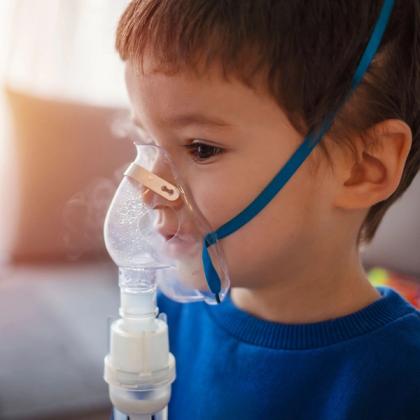Croup is a respiratory condition typically affecting children, characterised by a distinctive barking cough, hoarseness and difficulty breathing. Caused primarily by viral infections, especially the parainfluenza virus, it inflames the larynx, trachea and bronchi, leading to swelling and obstruction in the airway. Croup symptoms often worsen at night and can be triggered by environmental factors such as cold air. Treatment ranges from home remedies like humidified air and hydration to medical interventions, such as corticosteroids or nebulised epinephrine, depending on the severity of the condition. While most cases resolve within a few days, severe instances can lead to hospitalisation. In this episode, Dr Roger Henderson looks at how best to diagnose it, whether scoring systems are useful, and principles of effective management – including when to consider hospital referral.
Key references
- Smith DK, et al. Am Fam Physician. 2018;97(9):575-580.
- Gates A, et al. Cochrane Database Syst Rev. 2018;8(8):CD001955. doi: 10.1002/14651858.CD001955.pub4.
- Bjornson C, et al. Cochrane Database Syst Rev. 2013;10(10):CD006619. doi: 10.1002/14651858.CD006619.pub3.
- NICE. https://bnf.nice.org.uk/treatment-summaries/croup/.
Key take-home points
- Croup is an upper respiratory tract infection (URTI) occurring in infants and toddlers.
- It affects 3% of children aged 6 months to 3 years of age.
- Parainfluenza viruses account for the majority of cases – typically parainfluenza virus types 1 or 3.
- There is a characteristic inspiratory stridor caused by laryngeal oedema and thick tenacious secretions that block the trachea and airways.
- The onset is slower than that of acute epiglottitis and is usually preceded by a coryzal prodrome.
- Viral croup affects children and has a peak incidence at 2 years of age.
- It is the most common cause of airway obstruction in children 6 months to 6 years of age.
- Boys are affected more often than girls, and it is most commonly seen in the autumn and winter months.
- Spasmodic croup is associated with the viruses that cause viral croup. In this case, the onset is sudden, without a viral prodrome. Clinically, it is difficult to distinguish between viral and spasmodic croup – but doing so is likely unnecessary as treatment decisions are based upon history and clinical severity of the airway obstruction.
- Diagnosis is usually made on clinical grounds without the need for investigations.
- The classical feature of croup is a sudden-onset, seal-like barking cough – often preceded by a mild, non-specific URTI.
- Croup is typically worse at night or if the patient becomes agitated.
- A croup cough may very occasionally present abruptly with no preceding illness.
- If stridor is present, this indicates upper airway narrowing. Mild croup has no stridor at rest, more severe croup does.
- The illness peaks between 24 and 48 hours and usually resolves within 7 days.
- The modified Wesley clinical scoring system can be helpful in assessing the degree of severity of croup.
- Indications for hospitalisation are cyanosis, pallor, respiratory distress, hypoxaemia, stridor at rest, a toxic-looking child and suspected epiglottitis.
- Sitting the child upright may improve the croup.
- Humidification is often used but there is now convincing evidence that this is ineffective.
- Antipyretic agents should not be used with the sole aim of reducing body temperature and should be continued for only as long as the child appears distressed.
- In mild croup a single dose of oral dexamethasone (0.15 mg/kg) taken immediately appears to be of benefit compared with placebo.
- Oral dexamethasone 0.15 mg/kg, or prednisolone 1–2 mg/kg, is helpful in reducing upper airway inflammation, stridor and respiratory distress, and there is evidence that the use of nebulised steroids reduces the need for inhaled adrenaline.
- In most cases of moderate croup, symptoms resolve without significant complications, and with dexamethasone and nebulised epinephrine combination treatment the prognosis for severe croup is excellent.
- About 15% of patients experience a complication of viral croup, including otitis media.
- Death from croup is rare, occurring in about 1 in every 30,000 cases.
Create an account to add page annotations
Add information to this page that would be handy to have on hand during a consultation, such as a web address or phone number. This information will always be displayed when you visit this page
